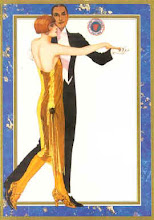The first jukebox was installed at the Palais Royal Hotel in San Francisco in 1899.
For a nickel apiece a thrilled group tunes in on a screechy jukebox of the 1890s. Photo: Bettmann/Corbis
1889: The first jukebox is installed at the Palais Royale Saloon in San Francisco. It becomes an overnight sensation, and its popularity spreads around the world.
That first jukebox was constructed by the Pacific Phonograph Company. Four stethoscope-like tubes were attached to an Edison Class M electric phonograph fitted inside an oak cabinet. The tubes operated individually, each being activated by the insertion of a coin, meaning that four different listeners could be plugged in to the same song simultaneously.
Towels were supplied to patrons so they could wipe off the end of the tube after each listening.
The success of the jukebox eventually spelled the end of the player piano, then the most common way of pounding out popular music to a line of thirsty barflies.
The machine was originally called the “nickel-in-the-slot player” by Louis Glass, the entrepreneur who installed it at the Palais Royale. (A nickel then had the buying power of $1.08 today.) It came to be known as the jukebox only later, although the origin of the word remains a bit vague. It may derive from “juke house,” a slang reference to bawdy house, where music was not unknown.
YES, THE QUEENS...
3 hours ago







0 comments:
Post a Comment